According to new data, the average age of a new mother in the United States is over 30 years old.
More than half of babies born in 2023 were to women in their 30s, provisional CDC data shows, surpassing those in their teens and 20s.
Meanwhile, a record number of women had their first child in their forties: 12.6 per 1,000 births among women aged 40 to 44 last year.
Experts have attributed the change to a rising cost of living across the United States as women prioritize their careers and education before settling down to start a family, as well as the availability of IVF.
The rise in older mothers has also sparked debate about whether women hoping to have children are at risk for complications or fit into a “maternal sweet spot” thanks to greater stability and resources.
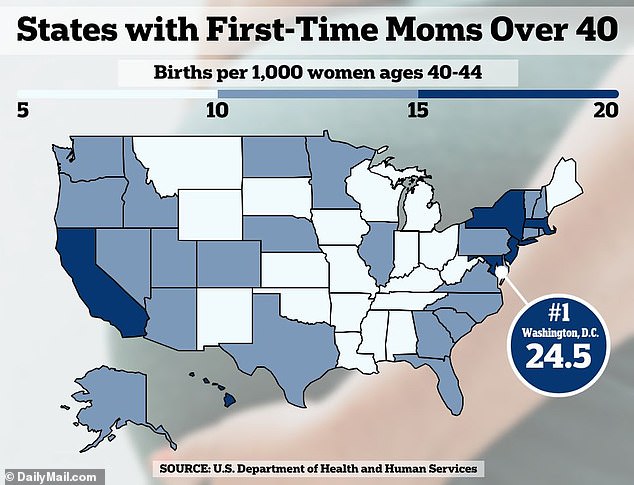
Older mothers were most common in Washington, DC, with 24.5 of every 1,000 births to women ages 40 to 44.
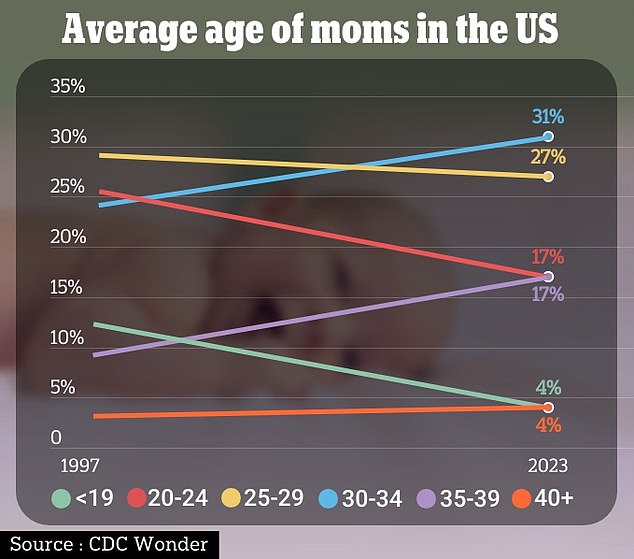

Provisional data from the CDC’s Wonder database found that about half of babies in the U.S. are born to women over 30, while births to younger mothers have declined.
Teen pregnancies, on the other hand, reached an all-time low, with 13.6 births per 1,000 women. This was two percent less than the previous year, although it was still higher than the rate for women over 40.
And once the norm, a historically low number of women had babies in their early twenties. The birth rate for women aged 20 to 24 fell from 61.5 per 1,000 the previous year to 57.5 per 1,000.
The CDC report found that there were 3.67 million births in the U.S. in 2022, which researchers said was “essentially unchanged from 2021.”
Although there was a one per cent increase in births from 2019 to 2020, this average fell one per cent per year from 2014 to 2019. ‘Previously, the number of births decreased by an average of two per cent per year from 2007 to 2013 and increased by one percent. in 2014,” the researchers wrote.
The data was part of the 2022 National Vital Statistics Report on birth data, produced by the CDC’s National Center for Health Statistics. Interim data for 2023 was collected through the CDC’s Wonder database.
The figures are obtained from birth certificates registered in all 50 states and D.C., as well as U.S. territories such as Puerto Rico, Guam, and the U.S. Virgin Islands.
The overall birth rate for women over 40 was 12.6 per 1,000 births, an all-time high.
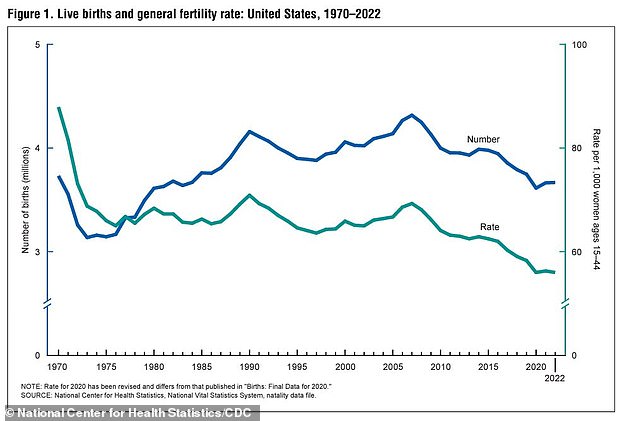

This graph shows the overall live birth rate by year. The United States has experienced a decline in fertility in recent years.
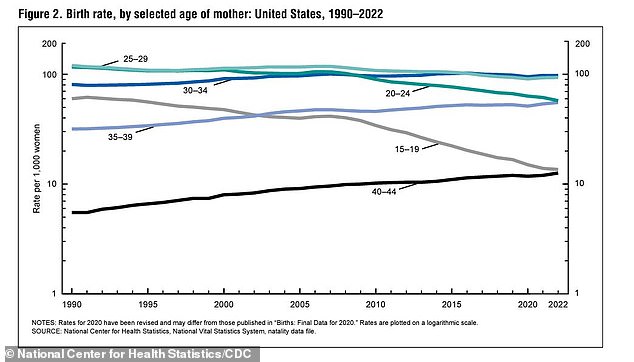

This chart shows the annual birth rate for women by age group as of 2022. Mothers having their first children at age 40 have reached an all-time high, at 12.6 per 1,000 births. This rate has increased steadily since the 1990s, while pregnancies among teens and women in their twenties have decreased.
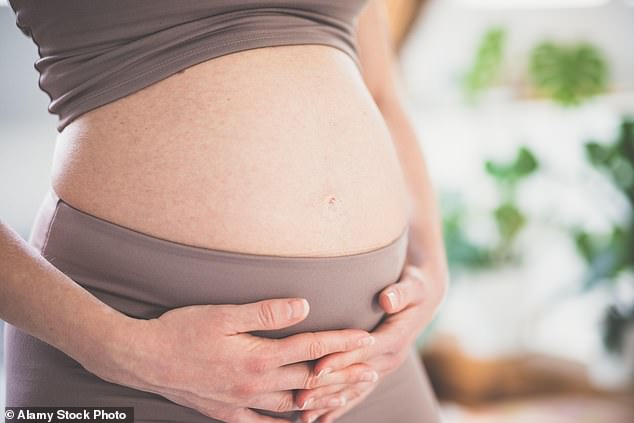

Researchers have suggested that women are waiting to have children because they are focusing on their career and using assistive reproductive technology such as IVF.
This increased from 12 in 2021. For women over 50, when menopause typically hits, that rate was 1.2 per 10,000, up from 0.9 in 2021. The researchers said this metric is calculated as a rate per 10,000 due to the lower number of births. in this category.
The rate was highest in women aged 30 to 34, at 97.5 per 1,000. However, this remained largely unchanged from 2021. For women aged 25 to 29, the birth rate was 93.5 per 1,000.
Older mothers were most common in Washington DC, with 24.5 of every 1,000 births to women between 40 and 44 years old.
Gretchen Livingston, a senior researcher at the Pew Research Center who collected birth data in D.C. in 2019, said WAMU that a ‘huge factor It’s educational level, as women in DC are more likely to have advanced degrees and demanding government positions.
“We have a very educated population around here and, in general, the more education a person has, the lower their fertility,” he said.
According to the DC Office of Planning, more than 55 percent of women in DC have at least a bachelor’s degree and one in three have a graduate or professional degree.
Marriage could also be a factor, Livingston said. “There are a lot of people who maybe just haven’t gotten to the point of getting married.”
“On the one hand, we hear a lot about births out of wedlock, (but) the fact is that a married person is much more likely to have a baby than a single person.”
New York and New Jersey followed closely with 18.8 and 17.4 births per 1,000, respectively, and California and Hawaii rounded out the top five.
This could be because both states have large urban areas such as New York City, Jersey City, and Newark.
West Virginia, meanwhile, had the lowest rate of first-time mothers over 40. Only 6.1 in every 1,000 births were to women aged 40 to 44, according to the data.
Only one in five women over the age of 25 have a bachelor’s degree in the Mountain State, according to research, although that represents an eight percent increase since 2000.
Additionally, 17.9 percent of the state’s people (approximately 308,000) live in poverty.
Both factors could increase women’s chances of having children at younger ages.
West Virginia had significantly higher birth rates for mothers in their 20s, with 81.1 for women ages 20 to 24 and 107.6 for women ages 25 to 29.
In terms of first-time mothers ages 40 to 44, Minnesota and Wyoming were close behind with 6.9 and 7.3 births per 1,000 women, respectively.
